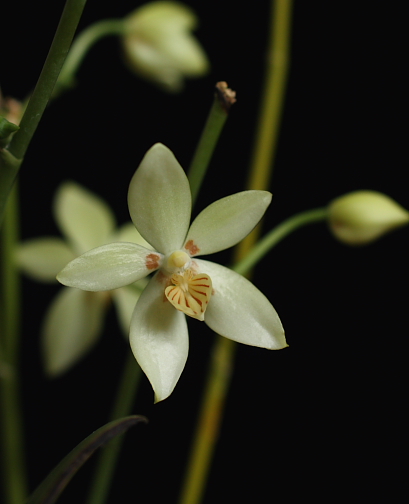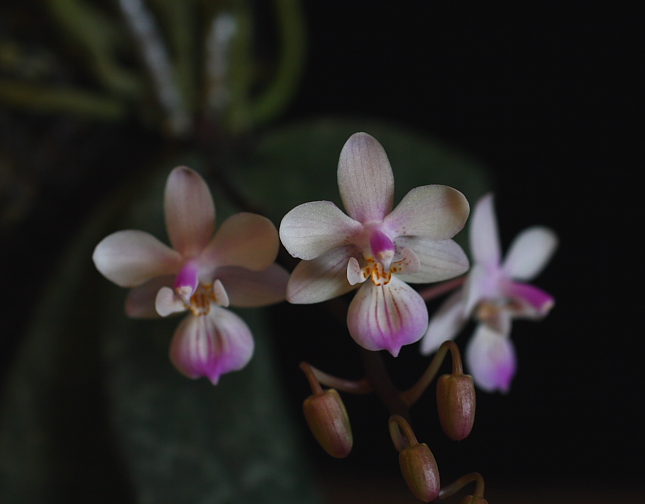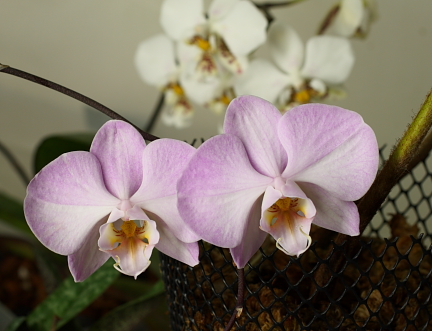Why do you say this?

see previous post on first page (or below)
>cochlearis likes intermediate/warm, moist and somewhat shady all the time and prefers some limestone in the mix. the flower is maybe 1" to 1-1/2" tall. oak hill has offered seedlings of it, along with dowery orchids and a few other places
I forgot to add that cochlearis is one of the species like corningiana that likes to have the same temperatures all the time. It is close enough to the equator that the temps don't really change. It is a good species for growing under lights or on a windowsill if you have good humidity, and it also prefers not to get too hot, or have a big temperature change from day to night.
corningiana, cochlearis and maculata are three that grow in places where the environment is often very stable, temperature and light-wise. Things don't change very much. Day temps and night temps on average year-round are within a few degrees of each other. The deviation between day and night temperatures is also often very small due to close equatorial and low-elevation positions. This translates to plants that don't like a lot of change, which stresses them. Also none of them have very high average day temps.
Indoor environments in general if you were to have plants under lights would likely mirror what they have in nature. Often usually greenhouses will have very extreme temps through the day, day to day and year round, which will stress them to no end. Many people have a very hard time growing them in a greenhouse, unless they have been able to modify the area so that the temperatures are stabilized. A look at Charles and Margaret Baker's culture sheets for these species
www.orchidculture.com and the weather station data and collection of grower's reports for how they grow these species point this out (which is how I was able to figure this all out).
Now, there are excellent growers who can grow anything and find just the right spot for these plants and live in an environment that helps make it easier to grow them in a greenhouse, but probably many don't have the setup or the time to make it work right for them. Conditions in the home are actually much easier to adjust for them to be happy. Same thing with lindenii if you don't have a fan pad cooler or something like that or lots of vandas to hide them under; a kitchen windowsill is a great place to grow lindeniis
Now again, if you know that these species need very equable conditions year-round and you have a greenhouse and are able to modify an area so that the extremes are greatly lessened, then you will be ahead of the game and most of the other people who have tried to grow them in greenhouses but didn't know their cultural requirements. Knowledge is great medicine, in this case. I see you live in Texas which would lead me to believe that conditions in a greenhouse you might have could be very extreme. If you had a spot that had a ton of shadecloth, a good heater in winter and a way to keep the humidity in decent numbers and somehow regulate it all so that the temps stayed pretty close and not too high, then you might have a good chance to grow them and keep them alive for some time. Then again if you really like them maybe it's better to just have them on your windowsill.
Has this helped, or did I just confuse things more? Looking at the culture sheets would help explain this a lot better when you see how even the conditions are where they grow









